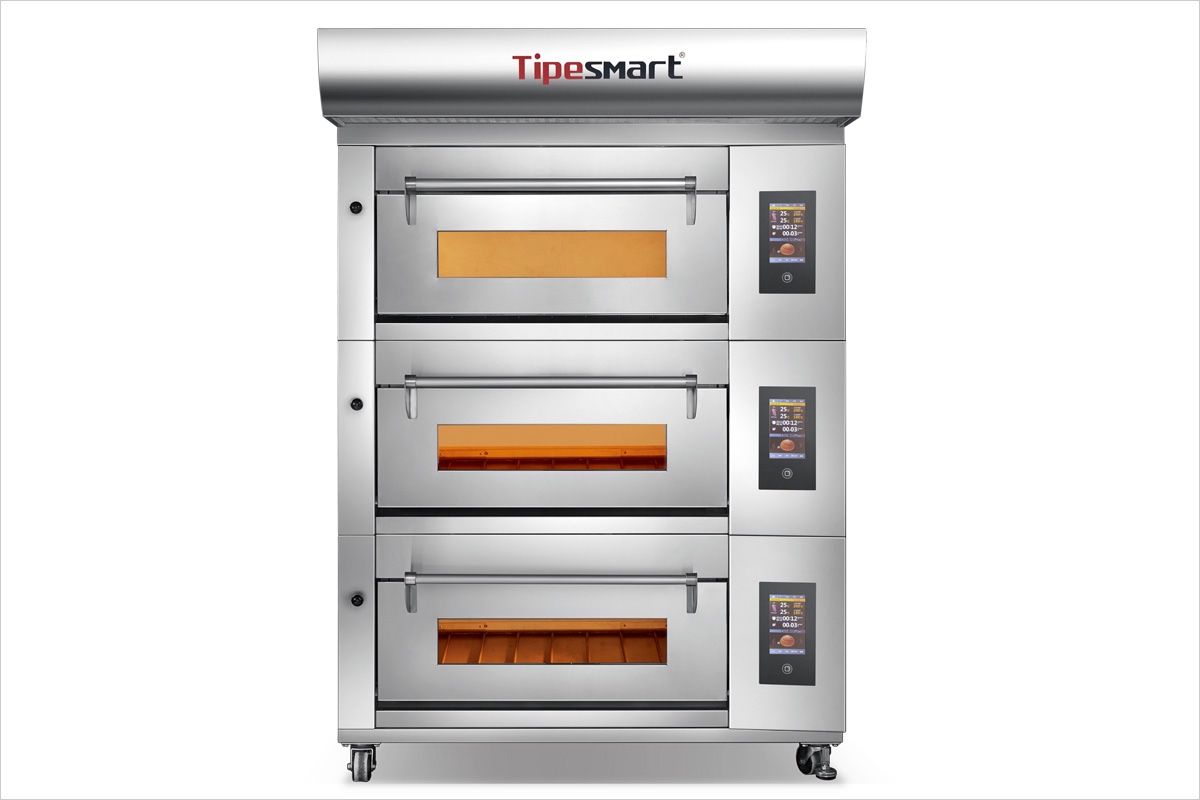
How to use your gas oven for baking cakes
Baking using a gas oven is different from an electric oven since gas ovens heat up quickly and sporadically causing uneven heat distribution. It takes practice to bake properly on a gas oven.
For gas ovens, the main burner is at the bottom of the compartment. Some ovens may have a second burner at the roof of the oven compartment often used for broiling.
Follow these steps when baking cakes with a gas oven:
Turn on the knob to maximum and light the gas with a lighter or a match stick. To light a gas oven, locate the pilot light that is often located at the bottom of the oven. When a blue light turns on, the oven is now ready to be used.
If you are baking in more than one tin or tray, make it a point to rotate once or twice during your cooking. Rotate 90 degrees halfway during cooking. This will help eliminate the chances of hot spots on one side of the cake.
Avoid putting your cake at the bottom rack so that it doesn’t burn. The upper rack is preferred to avoid burning the bottom of your cake.
Test it with a toothpick to see if it comes out clean.
Remember when using the gas oven, it may take longer for the cake to bake all the way through and not just the bottom and the sides.
If it is not done through, slightly lower the temperature by about 15 degrees and allow for an extra 10-15 minutes of your baking time.
When ready, take out the cake, shut the oven door, and shut it off.
You can choose to use a separate oven thermometer to gauge the temperature and place a pizza stone on the bottom rack. This reduces the heat spikes that might occur with gas ovens.
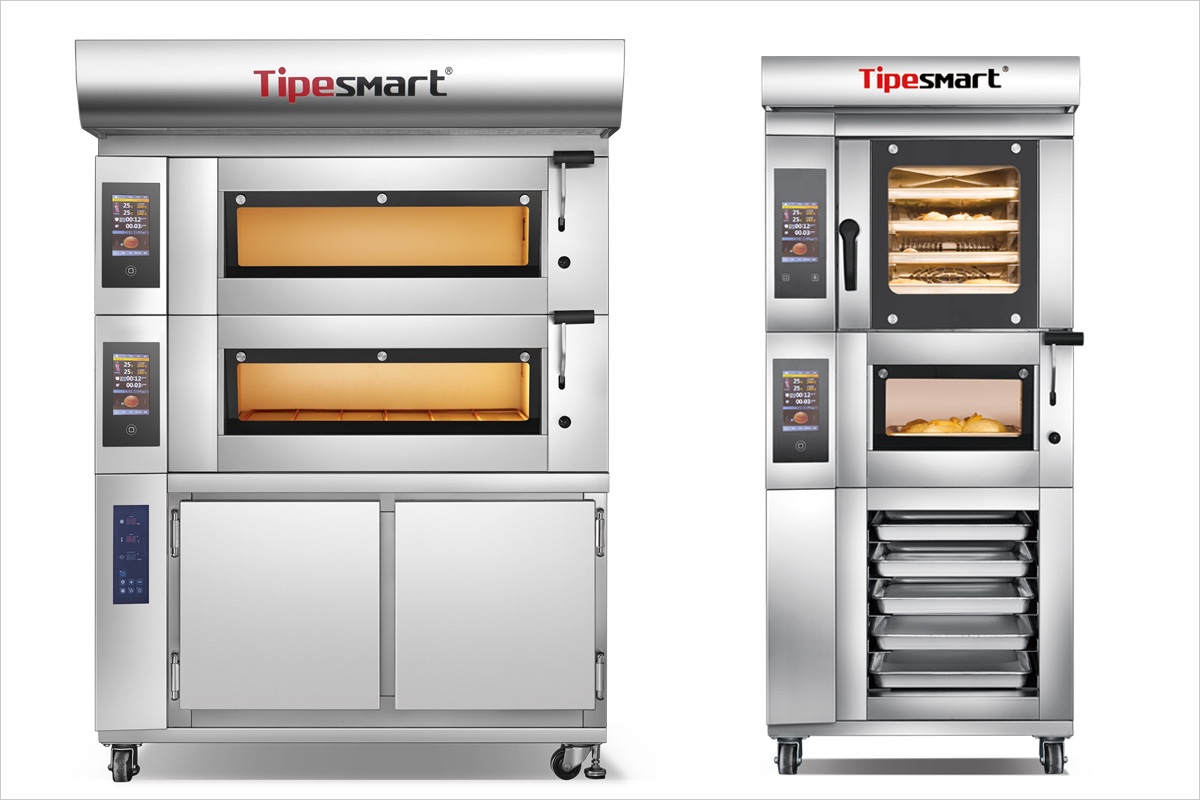
Convection Oven Benefits
The major benefit of convection ovens, when compared to a standard radiant oven, is their ability to reduce cooking time by up to 25% and cooking temperature up to 30%. These units are so versatile that they can be used to cook, warm, roast, re-thermalize, and bake.
Convection ovens work so efficiently because they're equipped with fan technology that actively circulates the hot air in the oven around the food, creating a uniformly even temperature and cooking every surface with equal heat. Standard radiant ovens let air move around the food at random, which creates hot and cold spots, resulting in burnt and undercooked parts of the food. This system of moving air and equal heat also helps to ensure that the bottom of food doesn't get burnt to a crisp while the top is left nearly raw, a frequent occurrence with many regular ovens.
You can cook everything in a convection oven that you can cook in a standard radiant oven; oftentimes, items cooked in a convection oven are much tastier, crispier, and juicier. Since the cooking time and temperature are less, the butter and flour in a pie crust and other delicate bakery goods won't have time to fuse, creating flaky layers. Ultimately, you can use convection ovens for baking, roasting, browning, and rethermalizing.
The skin of a roasting chicken renders it's fat and browns more quickly, so the meat cooks faster and stays juicier. Meats also have a higher yield, which means it shrinks less, leaving more product for you to sell. Saving time and money will help your food service establishment be more profitable.
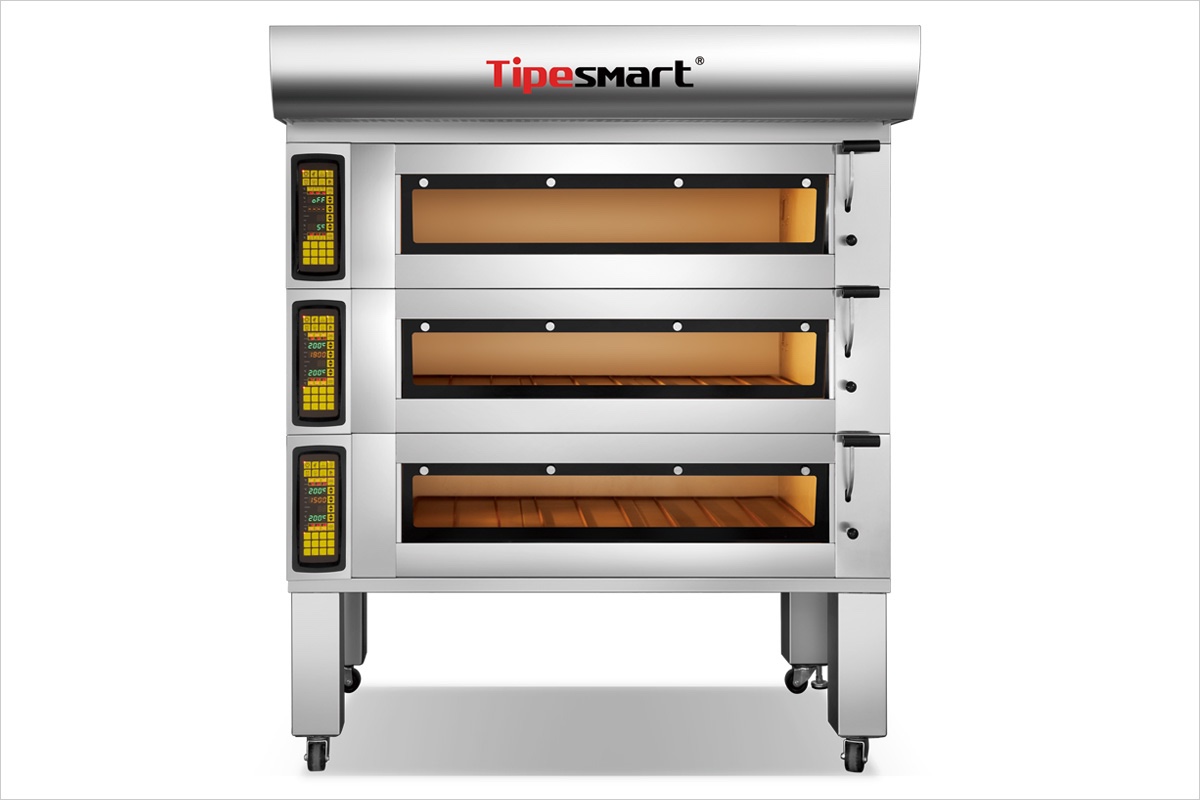
Types of Commercial Ovens
Standard Ovens: These ovens are the simplest kind of commercial ovens. Also known as "radiant ovens," a standard oven features a heating element in the bottom of the unit that transmits heat into the body of the oven. Standard ovens can be used to cook almost any recipe that requires the use of an oven. Additionally, they are generally the least expensive type of oven and are usually the easiest to repair. However, because of the inconsistent nature of radiant heat, standard ovens have a tendency to cook food slowly and sometimes unevenly if the oven temperature is not set high enough.
Convection Ovens: Convection ovens are very similar to standard ovens, aside from one major difference: air circulation. Convection ovens include fans within the body of the appliance that circulate the warm air through the oven. This air circulation allows food to be cooked faster (higher air velocity promotes faster heat transfer), more consistently, and at a lower temperature than is required from standard ovens. Circulating the air also prevents the formation of hot or cold spots in the oven, ensuring a more consistent cooking temperature and producing more evenly cooked food. Because of their reliability and versatility, convection ovens have become the standard in most commercial kitchens.
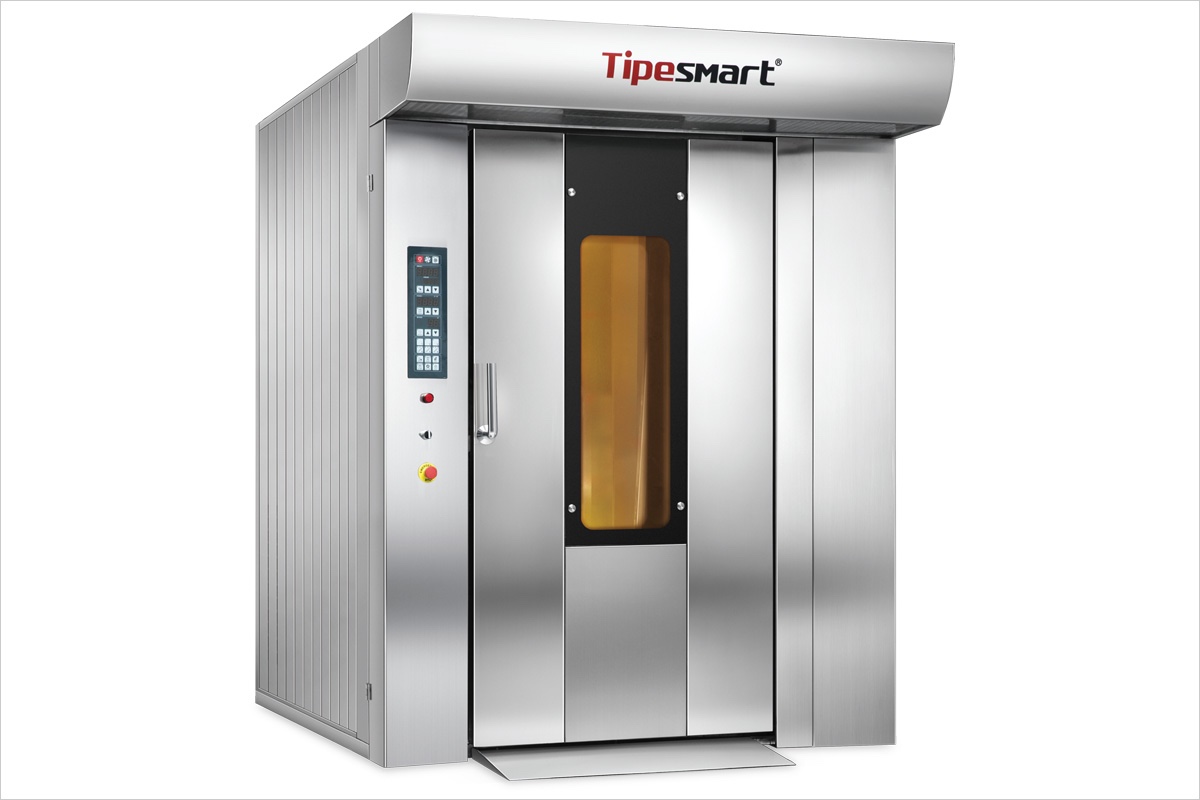
What are rotary ovens used for?
The rotary oven is bakery equipment designed especially for bakeries that want productivity, quality product, homogeneous baking characteristic, and more energy saving. The Control panel can be a touchscreen or manual.
Tipesmart Rotary Oven is a highly efficient oven built for heavy-duty production, while offering perfect baking results and energy efficieny. It is ideal for large bakeries, supermarkets, food factorie and hotels.
Newly upgraded speed-control offers 5 different speeds for your choice, you can bake any French pastries with easy control
Unique fresh air management to reach great crispiness
Powerful steam system with adjustable time and strength
Turning platform for better operation safety
Key components from European suppliers to ensure stability
Advanced Touchscreen PCB control for the best user-experience you may imagine
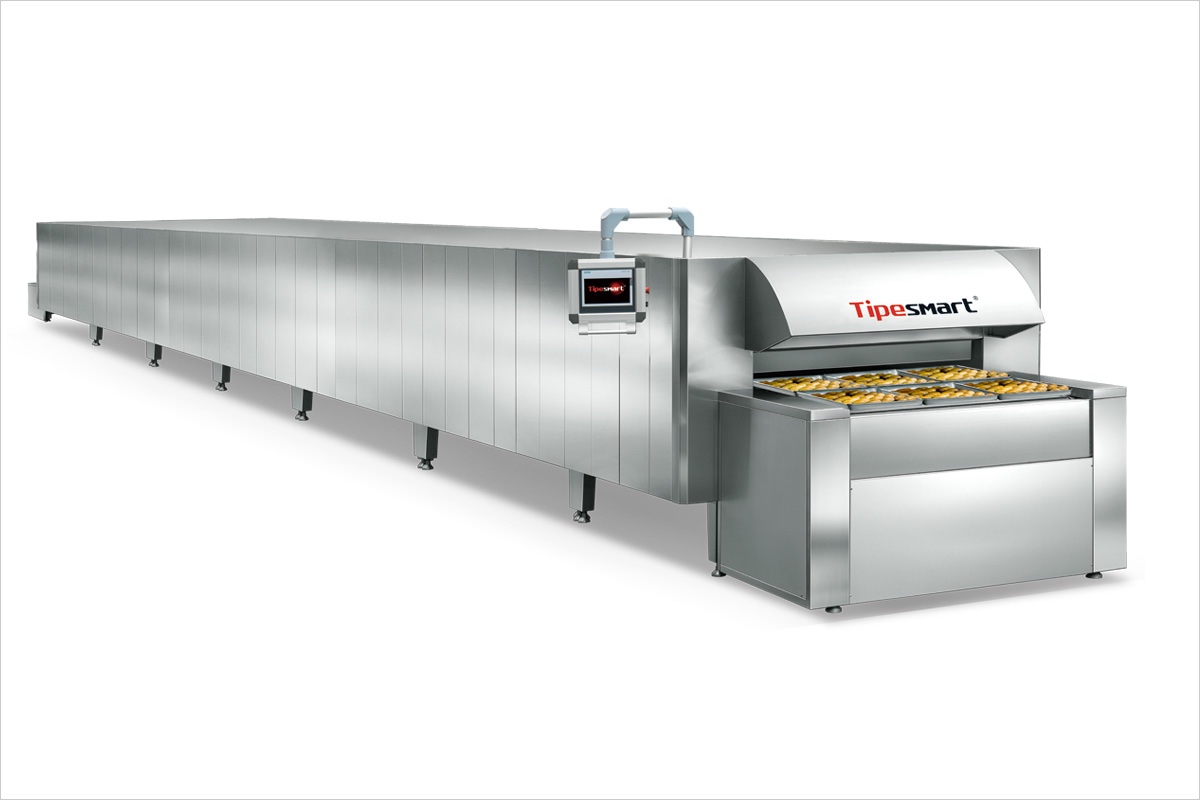
How does the tunnel oven work?
It heats the oil to the necessary temperature and circulates it through the pipes around the oven room. This will produce mild radiant heat, which is evenly balanced over the entire width of the oven without turbulent air movement. Tunnel ovens use different conveyor speeds to allow different cooking or baking times. Tunnel furnaces are continuous rather than using intermittent processes. It can be used to make bread, pies, cakes, cooked meat, and many other items. The product passes through the oven on the conveyor. They have a long conveyor belt that passes the dough through a heated box oven. The length of the oven is usually between 25 meters and 100 meters. The conveyor belt is made of steel mesh or carbon steel plate and rotates around a large cylinder at each end of the tunnel furnace. The conveyor is driven by a variable speed drive at the end of the tunnel oven, allowing the operator to adjust the baking time. Temperature and humidity control is divided into several areas along the length of the tunnel oven, and each control area is usually between 8 meters and 20 meters long. In this way, the temperature and humidity can be set and controlled throughout the baking process to optimize the conditions for the formation of biscuit structure, moisture content, and color when the dough moves in the oven. The extraction system in each area controls the humidity of the baking room and removes moisture from the dough. This includes ducts that draw air and moisture from the baking room through fans and discharge air into the atmosphere through vertical flues (chimneys).
Different times can be set for making different foods.
Slowly by heating, you can make delicious cakes, bread, pies, cooked meat, and other delicious food.
